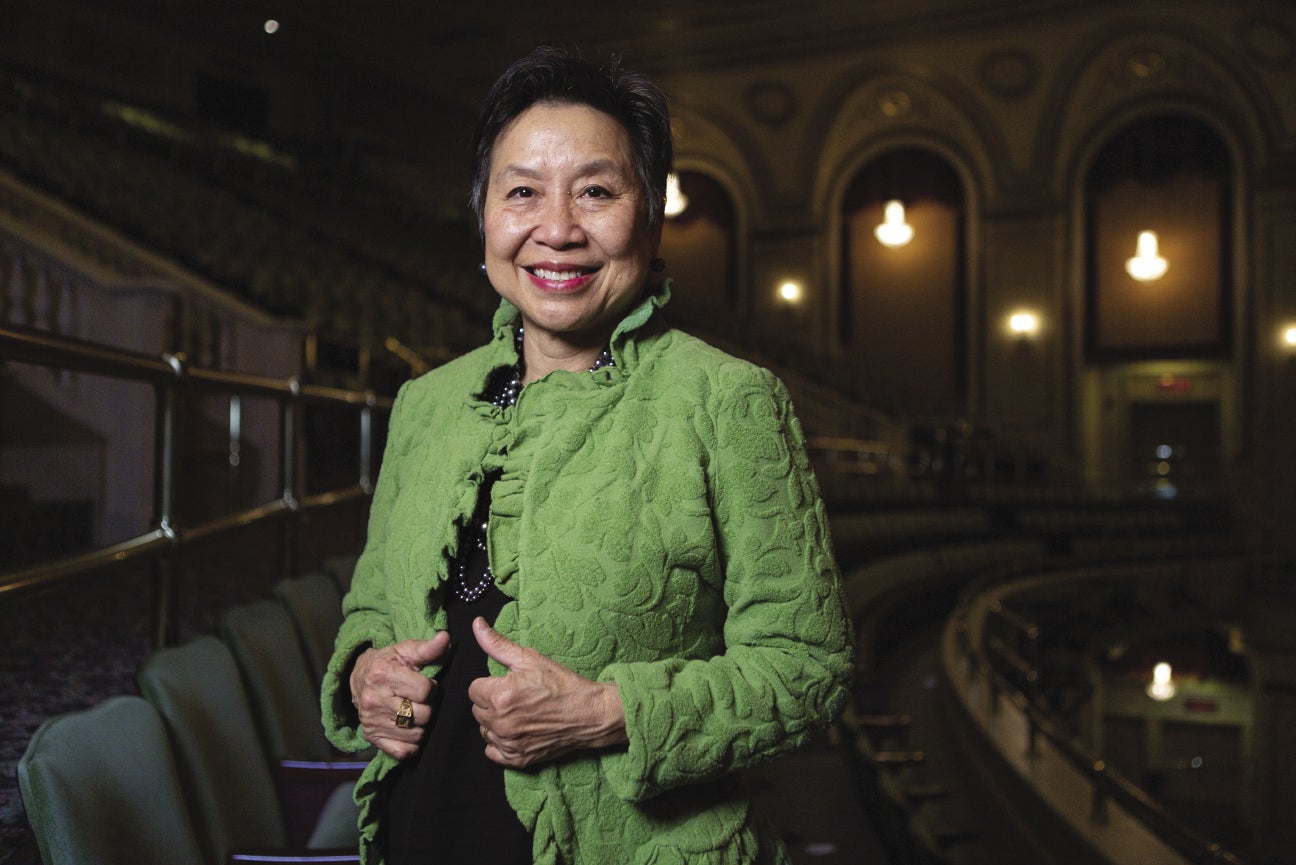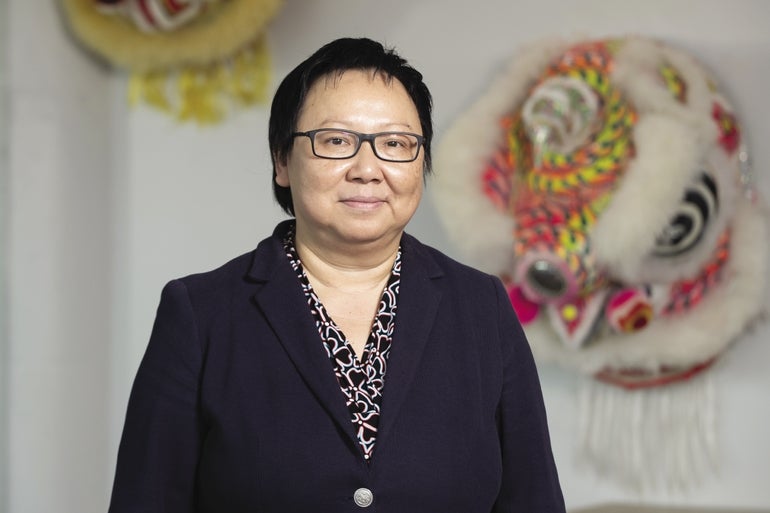As the Southeast Asian Coalition settles into new digs, its executive director arrives with big ambitions for its role in the community.
Get Instant Access to This Article
Subscribe to Worcester Business Journal and get immediate access to all of our subscriber-only content and much more.
- Critical Central Massachusetts business news updated daily.
- Immediate access to all subscriber-only content on our website.
- Bi-weekly print or digital editions of our award-winning publication.
- Special bonus issues like the WBJ Book of Lists.
- Exclusive ticket prize draws for our in-person events.
Click here to purchase a paywall bypass link for this article.
Tuyet Tran had been away from the Southeast Asian Coalition of Central Massachusetts for more than 15 years when the calls started coming in.
“Tuyet, we really need help here. Would you consider coming back?” is what she heard on the line.
Tran, a cofounder of SEACMA when it started as a small coalition of university student tutors and limited community advocates in 2001, ended up saying yes to those phone callers, coming back to the organization full time as executive director. Her return follows the departure of longtime executive director Anh Vu Sawyer, who left the coalition in September 2022 after leading it for 10 years.

Less than two months from taking over the No. 1 role on Feb. 6 at the Worcester-based nonprofit, Tran is building upon the last decade of growth at the organization with plans to expand the ways it integrates the Southeast Asian community into the fabric of the city of Worcester and Central Massachusetts at large. She is seeking out ways the coalition can uplift more people.
“That's the vision. As you receive help and begin to build your life and thrive, then you expand to helping newer folks,” Tran said.
Tran’s aim with SEACMA is for its members to become thriving members of the community; she does not want to just be a service provider, but rather, through meeting needs and making opportunities accessible, those who come to SEACMA can in turn contribute to the economy and to businesses. Among its programs is a small business development program, done in partnership with the Massachusetts Growth Capital Corp.
Building a thriving community is an important concept for Tran; one of her action plans as executive director is to assemble a community advisory board to think about how to materialize that goal. Her other objectives will require a bit more in funding. Her most ambitious visions have associated seven-figure needs.
Tran’s ultimate dream is a mixed-use center to serve as a community hub and offer housing, specifically to older adults who are isolated from the larger community by language and from their families in a way that is not typical of Asian cultures.
“Seeing folks being by themselves is very hard,” she said.
The kind of center Tran envisions would require millions of dollars.
“There's a lot of work remaining for that particular dream,” said Tran, but she remains optimistic in the possibility based on the success of other organizations creating similar places.
Fulfilling a growing need
Tran came to the United States as a refugee from Vietnam with her family in the mid-1970s. Her sisters, who learned English in school before they left Vietnam, helped interpret for fellow refugees in camps before the family settled in Massachusetts. Watching this, Tran realized she wanted to be able to help, too, she said. This was the catalyst for her career first as a clinical social worker and then as a project director at community providers in the behavioral health sphere, including Community Healthlink in Worcester and Behavioral Health Partners of MetroWest.
While she was a social worker with Community Healthlink, assisting individuals with access to housing and food, the needs of the Southeast Asian community in the city came to the forefront for Tran.
“There was a large Southeast Asian community, but it was a very quiet community,” she said.

Concerningly, said Tran, there were noticeable issues being exacerbated by language barriers. She would watch providers try to communicate with non-English speakers, and when they weren’t understood, they would just speak louder. The lack of communication was alarming to Tran. It was 1999, and the concept of culturally competent care wasn’t yet commonplace in the nonprofit sphere. SEACMA was founded to address the lack of culturally and linguistically acceptable services for Southeast Asian immigrants in the region, and its services and vision have grown from there.
Before it was SEACMA, the coalition was mostly made up of a group of Southeast Asian college students teaching computer skills in what Tran described as a leaky old house. The group heard there was a young Vietnamese social worker in the area, and they invited her to help them brainstorm how to move forward. It wasn’t long before they sweet talked Tran into being board chair.
With less than $5,000 in the bank, the group became an official nonprofit agency in 2001.
“We started with what we could,” Tran said.
Tran remained as board chair and then acting director until 2006, after which point she stayed involved with fundraising but left to pursue other aspects of her career.
SEACMA is critical in the Greater Worcester community, said Tim Garvin, president and CEO of the United Way of Central Massachusetts. The United Way, a social services nonprofit funding programs across the region, has supported SEAC for more than a decade.

“They heal lives that have been broken,” Garvin said.
In Garvin’s perspective, of particular praiseworthiness is the organization’s youth programming. “It has allowed a cultural identity and heritage to continue,” said Garvin.
The organization has extended its reach to help refugees from beyond the Southeast Asian region. It has welcomed Iraqi and Afghan refugees to use its services to get situated in Central Massachusetts, something Tran did not foresee in the early 2000s, but fits with the expanded mission as SEACMA has continued to gain steam with more years under its belt.
“The organization has changed, and the mission has expanded,” Tran said.
This does not go unnoticed in the broader nonprofit world of Greater Worcester. Garvin said the coalition has a reputation for being committed to a vast array of people and always welcome more.
“They have always found a way to say, ‘Yes,’” Garvin said.
SEACMA’s next chapter
Tran’s first day back was the same day SEACMA moved offices from the Denholm Building to the Printer’s Building on Portland Street in Worcester. Tran’s first few months as executive director have been good, if hectic.
“It’s been fun and a little bit chaotic,” she said of reacquainting herself with the SEACMA of today and the task of unpacking all of the organization’s assets, literally and figuratively.
“The lucky part is, now I have 20 more years of experience,” said Tran, who remained in Central Massachusetts as she gained increasing responsibilities at Community Healthlink. She ended up operating six programs at Community Healthlink, some of which were in partnership with SEACMA.
Now that both she and the Southeast Asian community at large are in a different position in Worcester than 20 years ago, the question is how to continue meeting the current needs.
“How do you move and diversify from just receiving services and funding to contributing it back as entrepreneurs and in business?” she said she asked herself.
One plan is to set up a hydroponic garden in a freight truck, where members of SEACMA can run a self-sufficient vegetable-growing operation. Tran is in the process of finding land to lease where the garden could be located. She envisions donating the vegetables to combat food insecurity and having members sell Asian produce and herbs in partnerships with local businesses.
The price tag for this project, which Tran estimates would cost a few hundred-thousand dollars, seems doable, she said. SEACMA generates about $400,000 in annual revenue and has $650,000 in net assets, according to its U.S. Internal Revenue Service filing in 2019, the most recent year available on Guidestar.org.
For now, Tran is energized by the youth group coming to the Printer Building in the afternoon after school.
“The center comes alive,” she said.
She is grateful to be able to leverage her own experiences to support the next generation, she said.
“The beauty of this role is to be able to provide a face for this place. That there’s a person they can come to talk to about their future. That’s what happened to me in my life, and I feel good that I can give back in that way,” Tran said.

